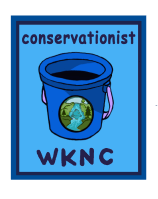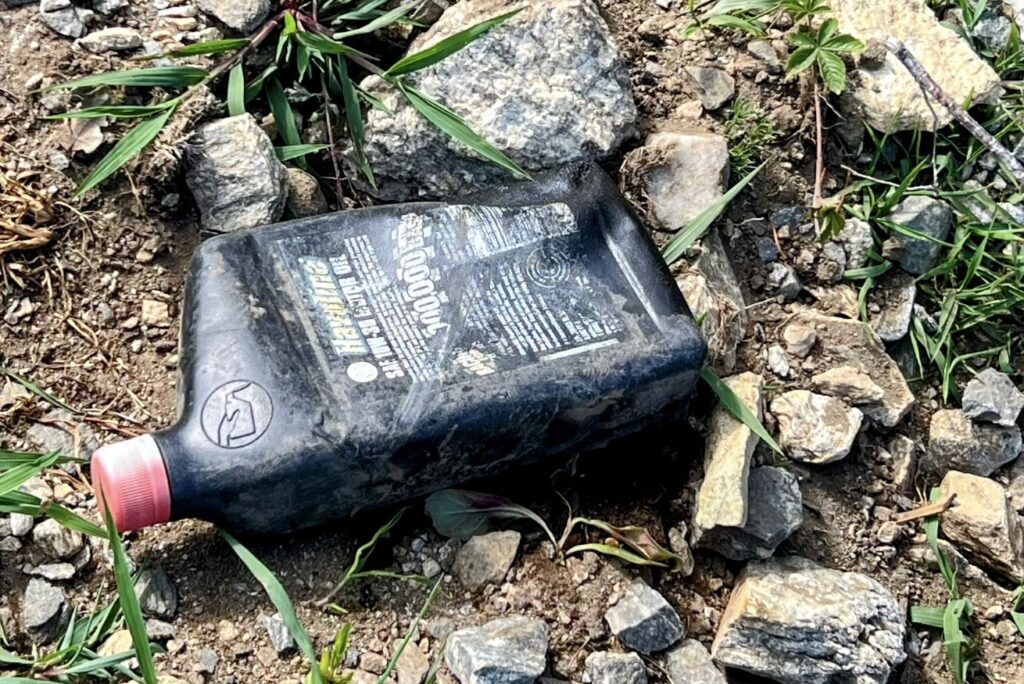

Keeping nature in its natural state is best for us, and more importantly, it benefits the wildlife and vegetation that surrounds our beautiful waterfalls.
Litter is very harmful to wildlife. Animals do not know that if they eat that tasty snack and its wrapper, it could poison them or cause them to choke and die.
Litter can also contain harmful chemicals that could kill the plants, and it causes water pollution, which will affect the community at large and the creek critters that depend on clean water for their habitat. It is up to YOU to make good choices that will help our environment.

Waterfalls are beautiful and often have a nice pool at the bottom that you and your friends can wade in. You can relax and have a picnic there and enjoy all the sounds, sights, smells. Sometimes there can be even be camping sites by the creek along the trail to the waterfall.
But too often there can also be a lot of trash, especially when it’s a popular waterfall that people like to visit.. We have found boxes, cans, styrofoam, and more, starting in the parking lot and continuing all along the trail.
If you plan to visit a waterfall, remember to bring gloves and a trash bag or bucket with you because there is sure to be some trash for you to pick up. (And remember not to leave any litter yourself!)
Conservation involves more than just picking up trash, even though that’s a very important part of it. Trash is easy to identify on the trail or in the stream. If you see a plastic bottle or aluminum can, you know you need to add that to your trash bucket. Right?

But what about an apple core or an orange peel? Is that trash? As a matter of fact, yes. Even organic matter like uneaten food is trash and should be picked up if you find it near a waterfall. Animals could eat it and become sick or they may learn to associate humans with food, which never ends up being good for the animal. If you’re not sure, think about it this way: “Would that be here if someone hadn’t put it here?” If the answer is no, add it to your bucket!

There are also some things we can’t see that could be polluting the water, such as chemicals. Sometimes you can find bottles or other containers near the water that once contained chemicals and other toxic substances. When those chemicals end up in the stream, it contaminates the water for plants and animals that live there.
Being a conservationist also involves staying on the marked trail and not going off into areas that are not designated for walking. It may not seem like a big deal for one person to walk off the trail, but if everyone does it, after a while the area will get trampled and the plants and animal habitats can be destroyed.

Another very important thing you can do as a Junior Conservationist is to make sure other people know about pollution and how they can help curb it. Bring a friend with you on one of your walks to pick up trash near a waterfall and share with them what you know about protecting the trail and stream. Tell your siblings or parents, too, and urge them to tell a friend also. The more people there are who know about conservation, the more of us there will be working toward keeping our waterfalls beautiful!
Find out how much you’ve learned already about being a conservationist:
List some facts you would share with someone who asks you what being a conservationist is all about.
Why should you stay on the trail when you are walking to a waterfall?
What are some things you might see in an area where many people have walked off the trail?
Which of the following items would count as trash near a waterfall?
a. Soap bottle | b. Banana peel | c. Plastic bag | d. All of the above

Pick up as much trash as you can on the trail to your chosen waterfall. Submit a picture of you with the bucket or bag of trash (or just the bucket or bag of trash) at the waterfall.

Click here to open the Conservationist Coloring sheet and then print it. (If you are unable to print it, you can draw your own picture of the waterfall.)
On the blank side of the coloring sheet, draw a picture of trash that could be found at a waterfall.

Tell us why litter is bad for the environment. Next, tell us what could be improved on the trail based on your observations. Some things you could write about are what to do if the trail was dangerous, if there were any fallen trees on the trail, or if the steps or boardwalk needs to be improved. (Include the name of the trail and waterfall you visited.)

Did you notice you could hear the waterfall before you could see it? Some people say it sounds like it’s singing. What did it sound like to you?

Here’s a special Conservationist challenge activity for our friends whose physical or other abilities may differ:
Close your eyes and have an adult or friend hold out an object for you to touch or tap. Describe it. Is it soft like a leaf? Is it nubby like a pine cone? Hard like a rock? Crinkly like paper? Now open your eyes and see if you got it right! If it’s trash, what will you do with it?
(Parent or caregiver, please feel free to adapt this activity so your child can be included in the challenge. We will gladly work with you to tailor an activity for your child’s needs. We want all kids to enjoy waterfalls and the natural world!)
Ready to submit your photos, coloring sheets or voice recording to earn your badge?
Complete the Badge Challenge Submission form and upload them as scans, screenshots or attachments.
“To promote and advance the cultural, economic, ecological, and historical significance of North Carolina waterfalls; to serve as an educator and advocate; and to preserve waterfalls and facilitate their enjoyment in perpetuity.”
283 Inman Branch Road
Waynesville, NC 28786
The spray zone of a North Carolina Waterfall
Waterfall Keepers of North Carolina is a nonprofit, tax-exempt charitable organization (Tax ID 84-4464996) under Section 501(c)(3) of the U.S. Internal Revenue Code.
Copyright © 2022 Waterfall Keepers of North Carolina. All rights reserved. No portion of this website, including text, photos, and videos, may be reproduced, copied, saved, transferred, or transmitted in any manner, digital or otherwise, without written permission.
Privacy Policy